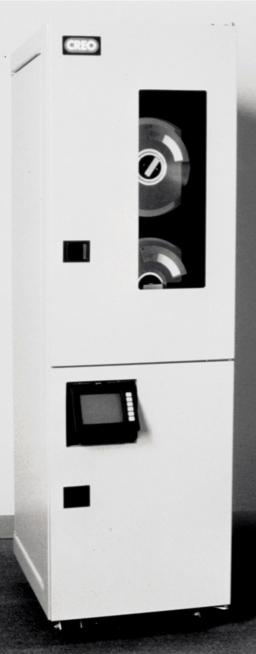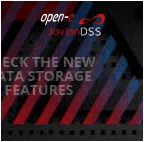History (1990): Creo Shipped First Drive Based on ICI Digital Paper
1TB tape device
By Jean Jacques Maleval | November 28, 2019 at 2:21 pm“Independent market research indicates that there is a strong potential market for a flexible optical disk drive,” commented ICI Image storage business manager M. Strelitz. “A targeted sample of 1,100 end users in the U. S. gave flexible optical disk drives the potential to achieve over 24% of the 5.25-inch removable mass storage market. That’s equivalent to 50% of the 5.25-inch optical disk drive market and exceeds the market share for magneto-optical drives by 25%.“
The first Creo drive, based on 1TB ICI Digital Paper, was shipped to its customer, the Canadian Centre for Remote Sensing, during the week of CeBIT’90.

Another announced tape drive development program based on ICI Digital Paper began working in January 1990. In this program, LaserTape Systems Inc., based in Campbell, CA, is working on a high capacity, cartridge based, digital optical tape storage system. The drive will be plug-compatible with the IBM 3480 and downsized systems, and, estimates LaserTape, will offer a capacity of up to 50GB per cartridge operating at a transfer rate of 3MB/s.
ICI Digital Paper is also playing a major part in a new project for the automatic identification of machine tool workbits and other industrial products using holographic tags.
The £2.3 million European research project, part of the European Commission’s Esprit program, brings ICI Imagedata into collaboration with other European organizations – the Krupp Forschungs Institut (Essen, West Germany), and Italian machine tool manufacturer Mandelli SpA.
The new holographic optical tag will be substantially smaller than current identification systems, such as bar coding or radio frequency tags. As a result, it will solve problems associated with identification in a number of industrial situations where space is at a premium (for example, the ISO standard tool bit holder, PCBs, ICs). Tags one centimeter square will, typically, contain up to 1,000 bits of “written” information on just a small proportion of the surface area. Being based on Digital Paper, these tags can permanently store up to one million bits of data per square millimeter.
By combining this technology and Krupp’s holographic systems expertise, retrieval of information will still be possible with up to 70% of the surface area of the hologram destroyed or obscured by debris. One of the other key advantages of the technology is that the information can be read from a distance at high speed (up to 50 tags/s) by shining a low-powered laser onto the optical tag. The reflected image is captured using a video camera attached to a PC decoding the signal. The test site for a prototype machine tool application will be organized by Mandelli, with testing due to take place in late 1991.
This article is an abstract of news published on the former paper version of Computer Data Storage Newsletter on issue ≠27, published on April 1990.














 Subscribe to our free daily newsletter
Subscribe to our free daily newsletter

